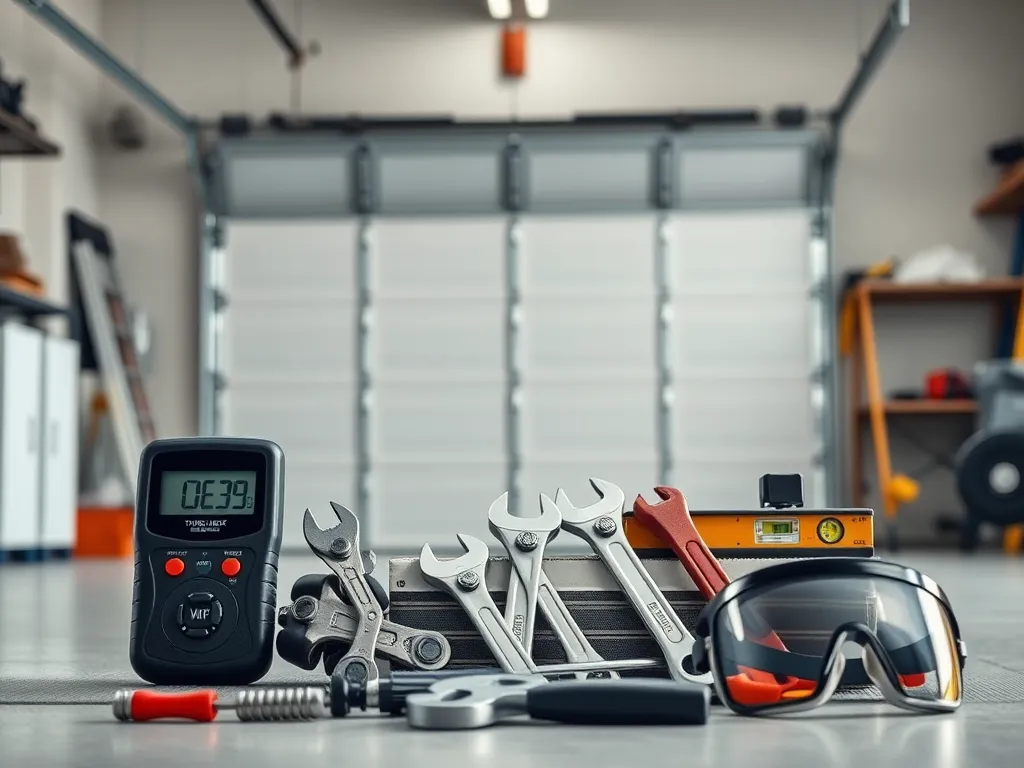Essential Tools and Equipment for Garage Door Tension Adjustment

Garage Door Tension Adjustment: A Comprehensive Guide
Garage door tension adjustment is a crucial maintenance task that ensures the smooth operation and prolonged lifespan of your garage door system. Over time, the tension in garage door springs can become unbalanced, affecting how your door opens and closes. Proper adjustment leads to better safety and performance.
Understanding the mechanics behind garage door tension adjustment is essential for homeowners who want to tackle this task themselves. Adjustments are typically made to the torsion springs located above the door or the extension springs situated on the sides. Incorrect tension can lead to significant operational issues, making it vital to follow the correct procedures.
Using a tension meter ensures your garage door springs are properly calibrated for safe operation.
Before attempting garage door tension adjustment, it's important to have the right tools and safety precautions in place. This article will guide you through the basic tools needed for tension adjustment, specialized equipment, safety gear, maintenance tools, and effective tips for using these tools during the adjustment process.
Always remember that if you are unsure about performing a garage door tension adjustment yourself, it’s advisable to seek professional help. Torsion springs, in particular, are under immense pressure and can pose serious risks if handled improperly. This guide aims to educate you about the process while emphasizing safety and proper procedures.
Garage door tension adjustment not only improves the functionality of the door but also enhances its safety, ensuring that the door does not suddenly drop or fail to operate. With a solid understanding and the right tools, you can manage this essential maintenance task with confidence.
Wearing protective gloves during garage door installation can prevent injuries and ensure safe handling of heavy components.
Basic Tools for Tension Adjustment
Screwdrivers are vital for garage door tension adjustment and are used for various tasks, such as removing screws from brackets or covers. It's important to have a selection of both flat-head and Phillips screwdrivers on hand to cater to different screw types you may encounter.
A reliable socket wrench is essential for quick and effective garage door repairs, making maintenance a breeze.
Wrenches come in different sizes and types, including adjustable wrenches, which allow for quick adjustments to various nut sizes. When choosing the right size, ensure that the wrench can securely grip the nut or bolt without slipping, as this can lead to accidents.
Pliers are essential for gripping and twisting wires or pulling out any stubborn fasteners. Needle-nose pliers can be particularly useful in tight spaces where larger tools cannot fit, allowing for precision handling during the adjustment process.
A measuring tape is crucial for ensuring accurate adjustments. It helps in measuring spring lengths and determining the correct tension required to keep the garage door balanced and functioning optimally.
Specialized Equipment for Garage Doors
A torque wrench is ideal for applying precise tension to the springs during adjustment. It enables you to specify the exact amount of torque required, minimizing the risk of over-tensioning or under-tensioning the springs.
Spring winding cones are vital safety tools that assist in adjusting the tension of torsion springs. Always follow safety protocols when using these tools, as improper handling can lead to injuries due to the rapid release of stored energy in the springs.
An adjustable ladder provides secure access to your garage door’s height, which is essential for making any adjustments to overhead springs. Ensure the ladder is stable, and always have someone hold it for added safety.
Safety glasses are crucial during any garage door adjustment task. They protect your eyes from flying debris or tools that may slip during the process, ensuring your safety throughout the task.
Safety Gear for DIY Adjustments
Wearing gloves is essential to protect your hands from cuts and scrapes during the adjustment process. Opt for thick, durable gloves that provide a good grip while also allowing for flexibility and movement.
Steel-toed boots are a smart addition to your safety gear. They protect your feet from heavy tools or components that may accidentally fall, crucial for maintaining safety on the worksite.
A face shield adds an extra layer of protection for your face and eyes, especially when working near high-tension springs or tools that can produce sparks or debris.
Long sleeves can help protect your arms from sharp edges and potential cuts, so it’s wise to wear clothing that covers your skin adequately while working on the garage door.
Maintenance Tools for Garage Doors
Lubricants play a significant role in maintaining the functionality of your garage door. Various types, such as silicone spray and lithium grease, can be used on springs, rollers, and tracks to ensure smooth operation and prevent rust.
Hinges and rollers may need replacement tools such as socket wrenches or pliers. Ensure you have the correct tools for disassembling old parts and installing new ones as part of your garage door maintenance.
Inspection cameras can be handy for monitoring hard-to-see areas of your garage door system. They allow you to identify any potential issues, helping you address problems before they become substantial inconveniences.
Cleaning supplies, including cloths and a soft brush, are important for keeping tracks and rollers free from dirt and debris. Regular cleaning ensures that the mechanical parts can operate freely, preventing operational issues in the future.
Tips for Using Tools Effectively
Organize your workspace to ensure that tools are within reach and that your work area is free of hazards. A clean and well-organized workspace can enhance your efficiency and reduce the risk of accidents.
Proper handling of tools is essential for avoiding injury. Always use tools for their intended purpose and don’t apply excessive force, which can lead to slips and mishaps.
Understanding tool limitations is crucial. Each tool is designed for specific functions, and recognizing these limits helps prevent misuse and unnecessary damage to equipment or your garage door system.
Finally, maintaining your tools is vital for longevity. Regularly clean and inspect your tools for wear and tear to ensure they remain in good working condition for future tasks.
